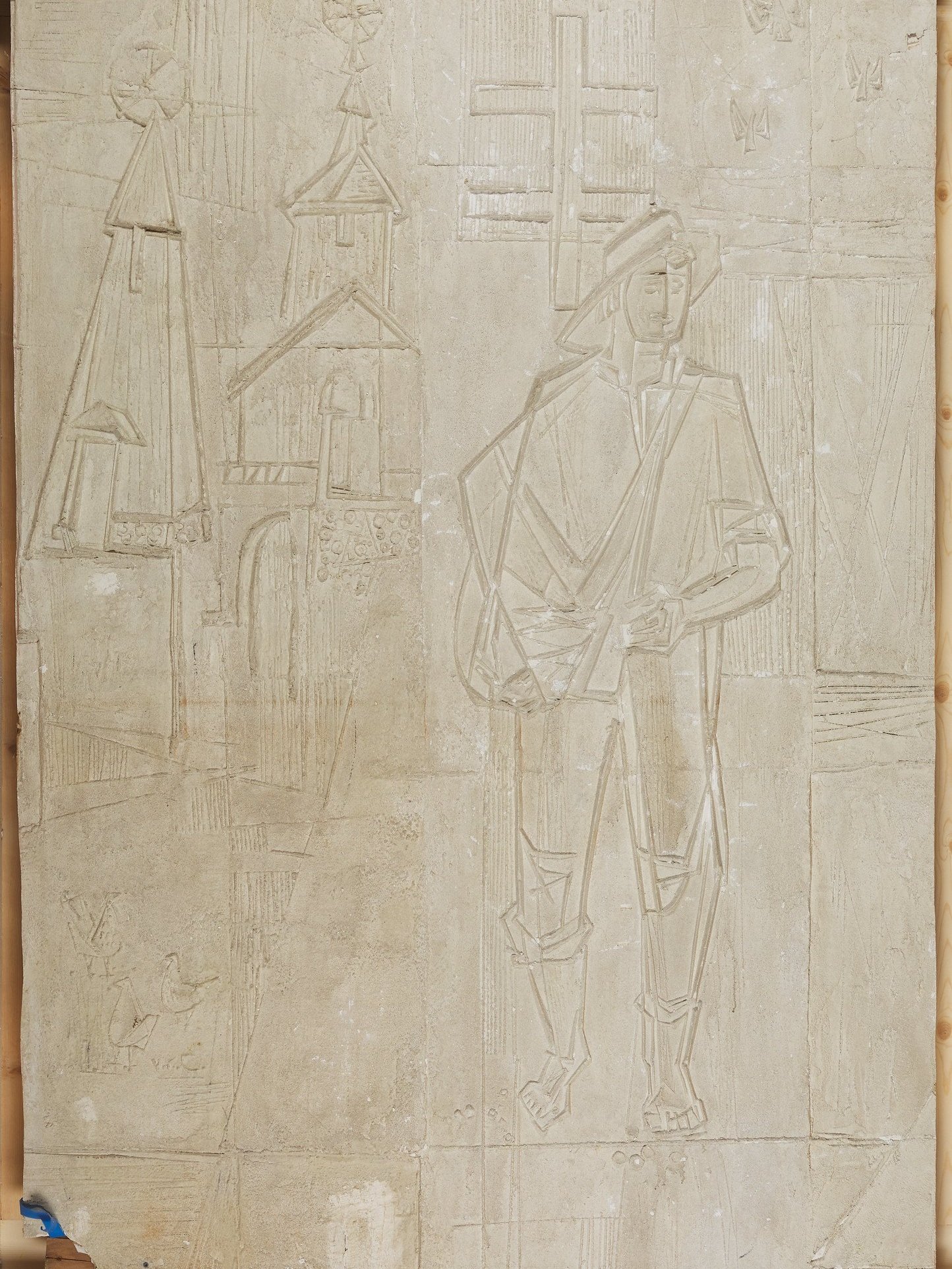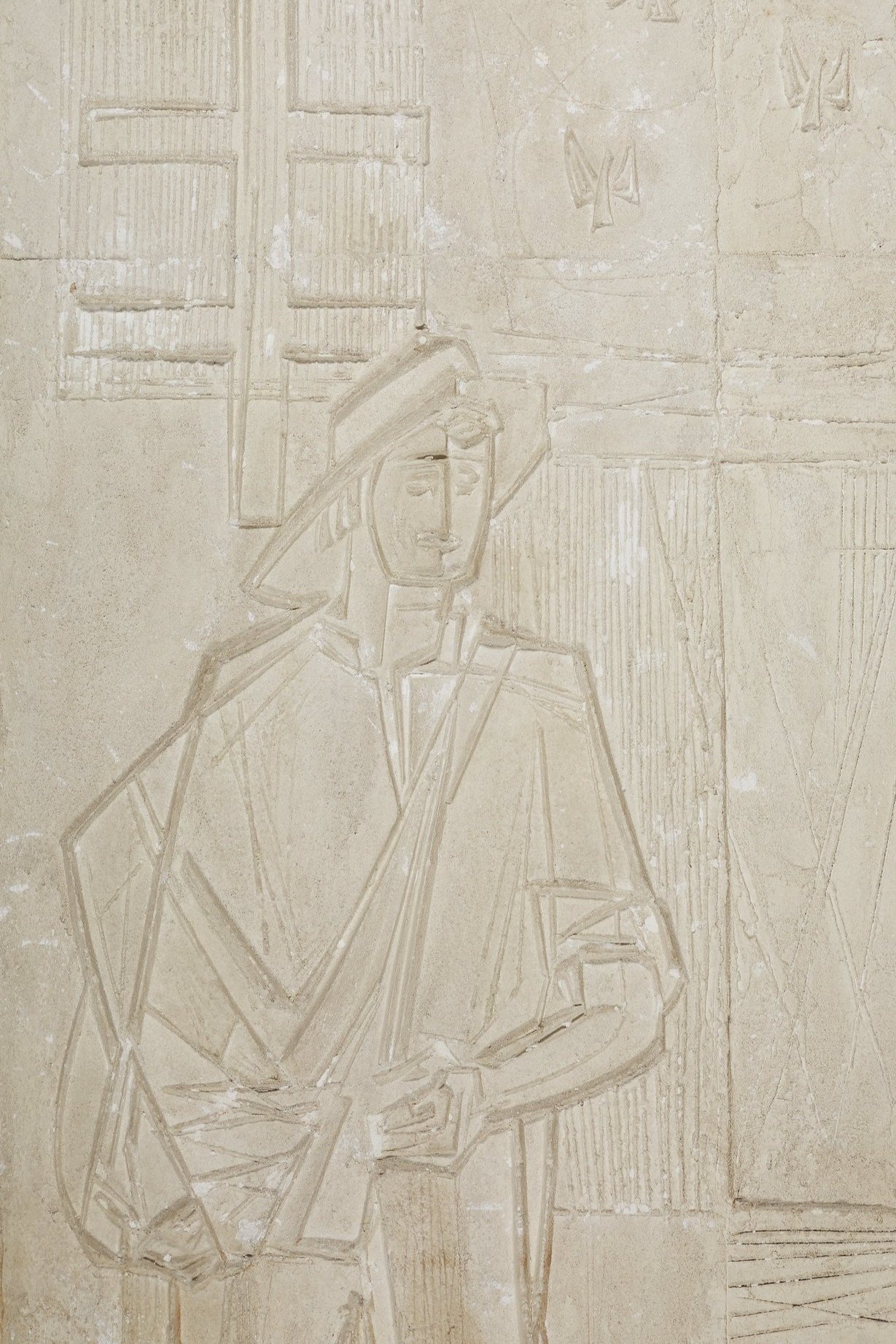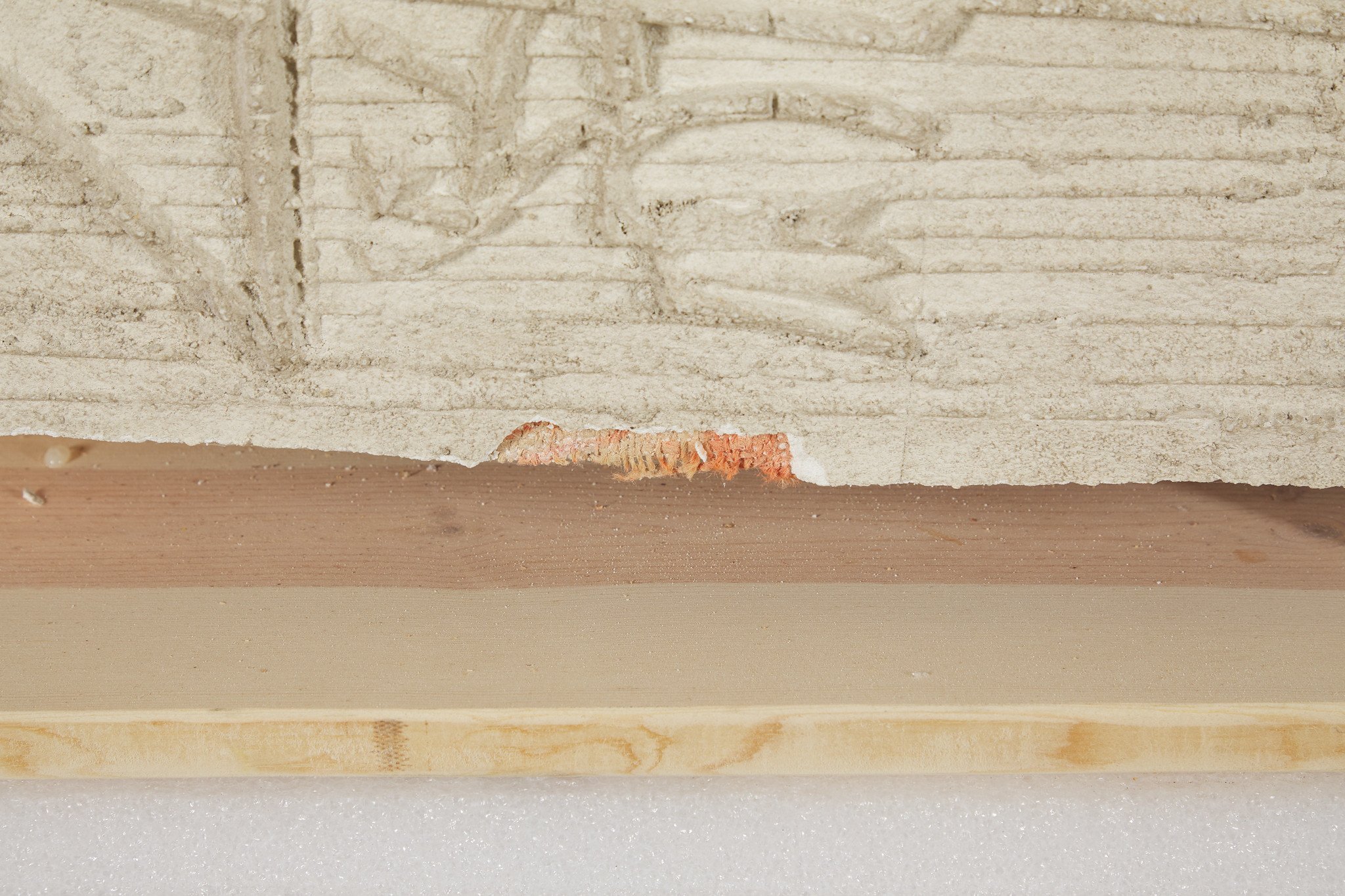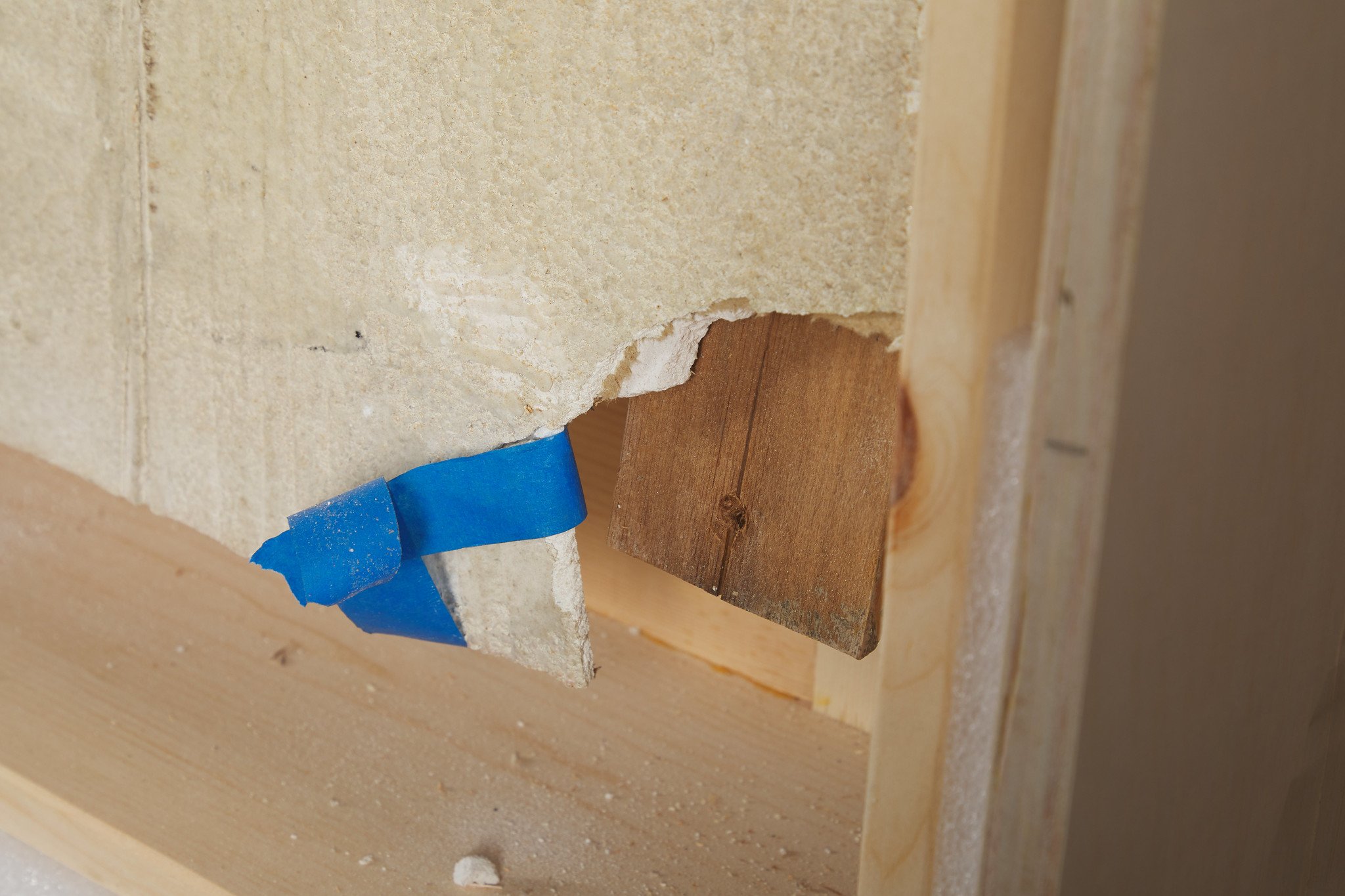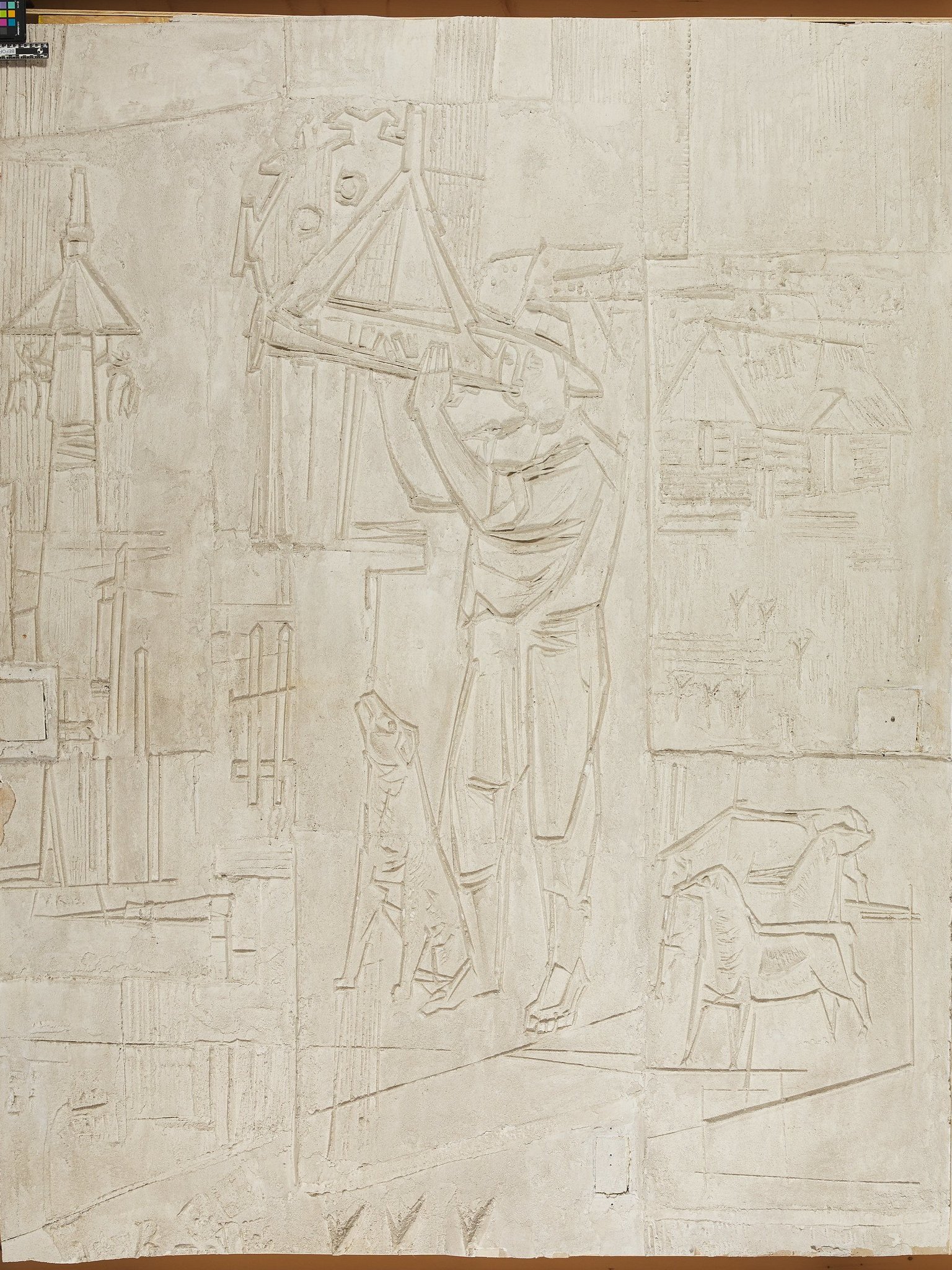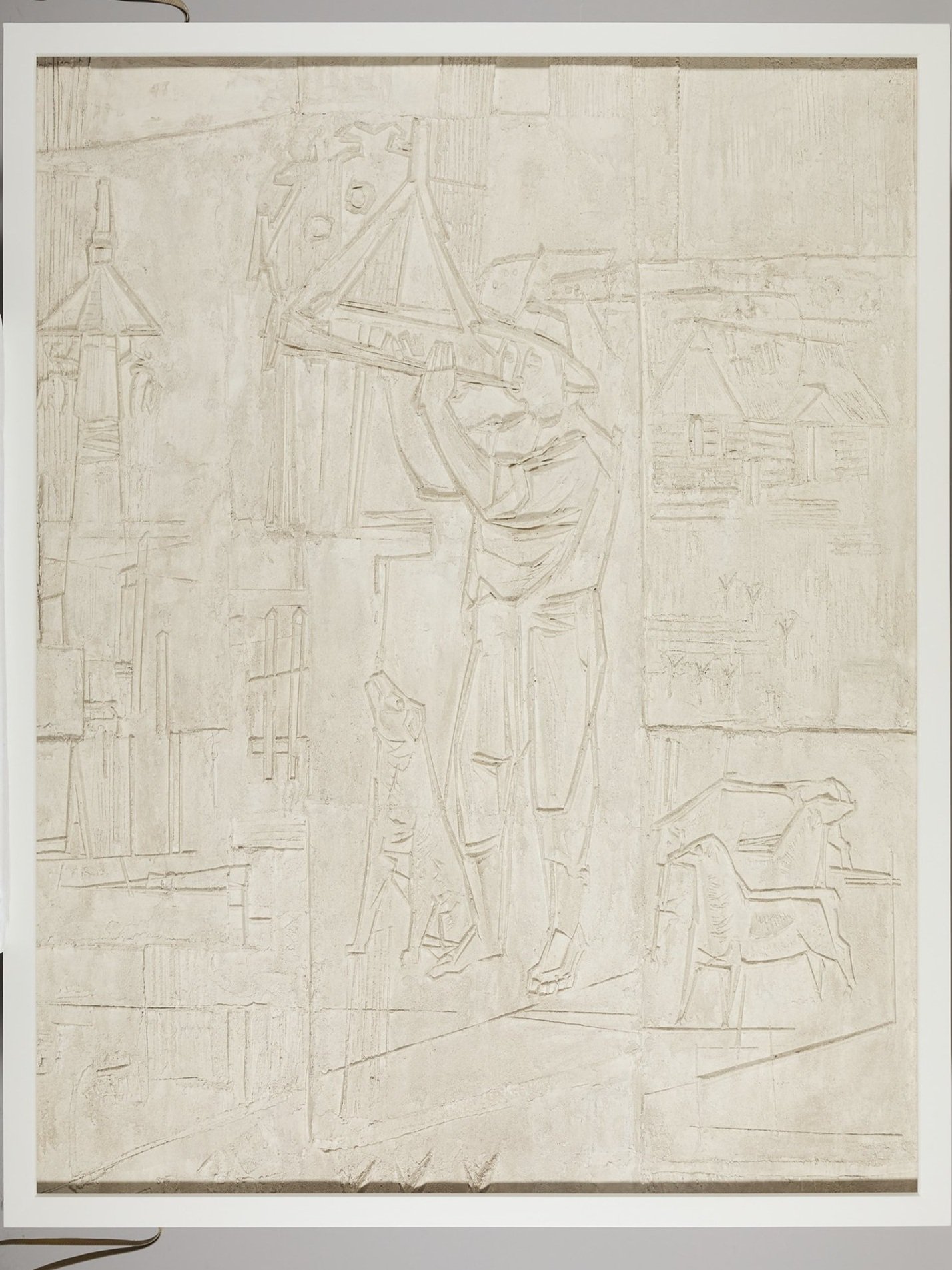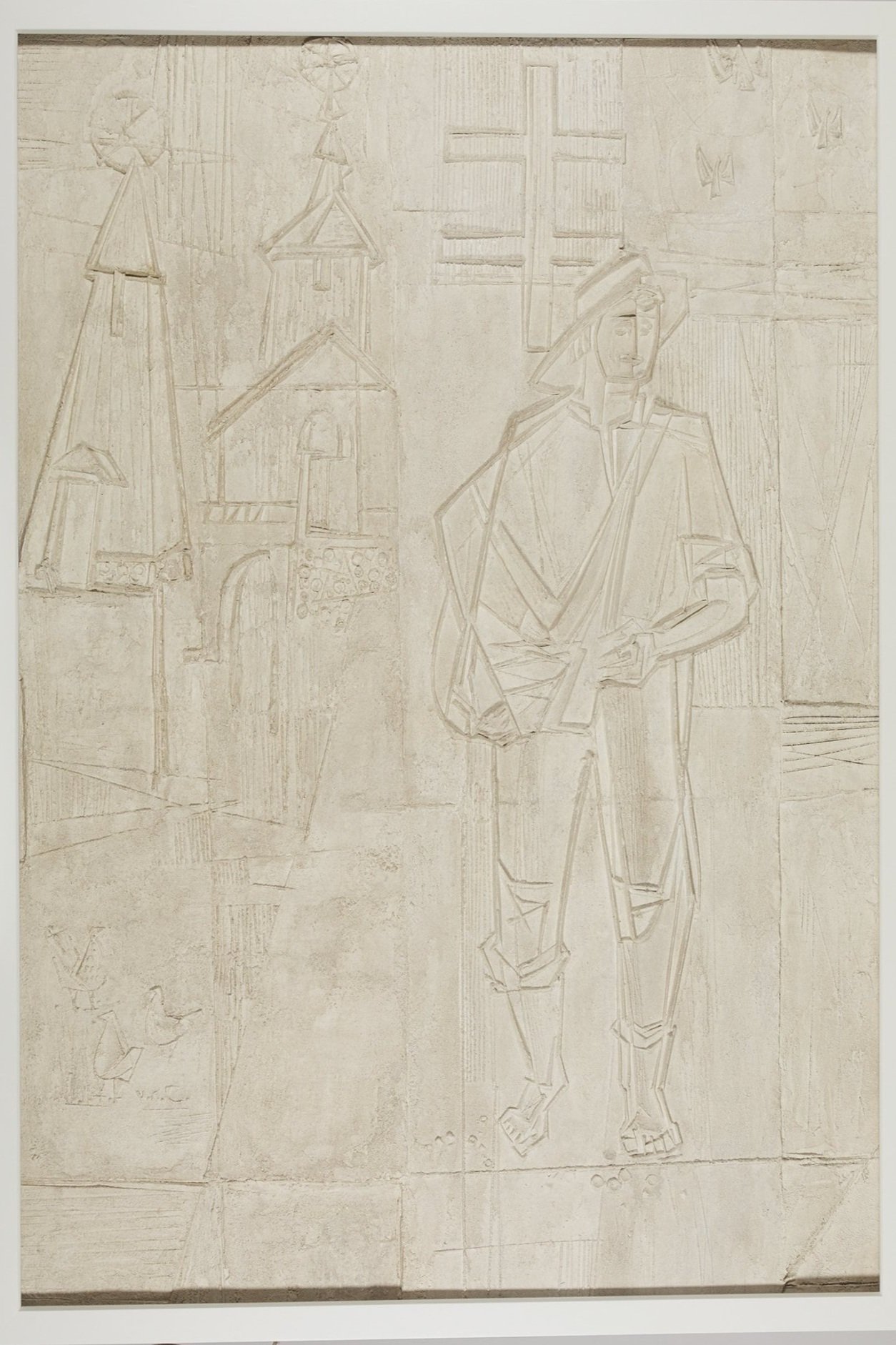The Shepherd bas reliefs by Vytautas Jonynas, before treatment
The Sower bas reliefs by Vytautas Jonynas, before treatment
Art conservation is a delicate and intricate process that aims to protect and preserve artworks for future generations to enjoy. Among the many art forms, sculptures often present unique challenges due to their three-dimensional nature and the variety of materials used. Such is the case with the conservation of The Shepherd and The Sower, two exquisite bas reliefs by renowned Lithuanian artist Vytautas Jonynas. These reliefs, originally installed in the summer home of Joseph and Alexandra Kazickas in East Hampton, NY, hold not only artistic significance but also historical value.
The Shepherd, before treatment detail
The Sower, before treatment detail
The Shepherd and The Sower are bas reliefs created by the renowned Lithuanian artist Vytautas Jonynas in 1966. Joseph Kazickas, a patron of Lithuanian artists, commissioned Vytautas Jonynas in 1966 to create these bas reliefs for a small cottage on their East Hampton property. Kazickas had designed the small cottage and commissioned the bas reliefs to be installed in the interior. At the time, Jonynas was an internationally respected artist with numerous honors and awards whose work was exhibited in several European museums. The reliefs depict scenes from Lithuanian folk life and serve as a testament to the enduring connection between art and heritage.
Vytautas Kazimieras Jonynas ©Vytautas Maželis
Lithuanian artist Vytautas Kazimieras Jonynas (1907 - 1997) was a book illustrator, graphic, painter, sculptor, stained glass artist, posters, and furniture designer. Among his many artistic accomplishments, Jonynas designed 50 stamps for the French Occupation zone in Germany, France, and the Vatican. Jonynas was commemorated on a stamp in 2007.
However, after Joseph Kazickas' passing in 2014, the house was sold according to his will. Fortunately, the Kazickas family managed to salvage these two bas reliefs, which are now destined for the Lithuanian World Center in Lemont, IL. But first, they made a stop at The Center’s laboratory for a conservation treatment that would ensure these pieces continue to tell their story for years.
The Shepherd bas reliefs by Vytautas Jonynas, before treatment, verso
The Sower bas reliefs by Vytautas Jonynas, before treatment, verso
Upon arrival at The Conservation Center, the bas reliefs presented a series of complex issues. The reliefs were constructed using a plaster and aggregate mixture applied to burlap on drywall boards attached to vertical lumber supports. Two lumber support studs remained attached to the center of the reliefs, and the top and bottom of the reliefs were stabilized using plywood strips.
The Shepherd, detail before treatment
The Sower, detail before treatment
Both reliefs displayed signs of deterioration, including crumbling drywall edges, numerous losses to the gypsum, and lifting sections of sculpted relief, likely caused during the removal process. Furthermore, the edges of the drywall had become unstable, causing the pieces to be out of square. The Shepherd has three cutouts in the plaster relief for electrical boxes. The cutouts had been retained; however, they had been adhered to a wood packing with screws and spray foam insulation.
The Sower, detail before treatment
The Sower, detail before treatment
The plaster surface of both reliefs appeared to be coated with a thin wash of paint or dye to achieve a tan color. However, The Sower had white joint compound fills scattered throughout the tan surface. There were also extensive wax fills and areas of wax surface coating on The Sower; the wax was soft, most likely paraffin, and may have been applied to the surface as a consolidant.
The treatments of The Shepherd and The Sower were performed by Senior Conservator of Objects and Frames Josh McCauley and Associate Conservator Andrew Rigsby, who meticulously assessed and planned the conservation process. Their goal was not only to address the visible damage but also to ensure the structural stability of the reliefs. Josh noted, "Treating the reliefs was a new experience for me. I have never had an opportunity to work with a piece made on a gypsum board. Since the reliefs were cut from a wall, there was damage along the edges and verso of the gypsum board. The board damage could affect the relief, making stabilization of the gypsum board a top priority."
They began by documenting the relief through photographs before and after treatment. The surfaces of both reliefs were gently cleaned using dry methods. Areas of plaster relief with lifting issues were locally consolidated using a reversible conservation-grade adhesive. To restore the structural components of The Shepherd, extensive work was done. The plaster relief cutouts were aligned and backed with an aluminum-faced acrylic sheet for support. The edges of the drywall and gypsum were cleaned and consolidated as necessary. The plywood strips and 2 x 4 inch boards were removed, and additional support structures were added to ensure stability. Andrew elaborated, "The pieces were executed directly on the drywall and subsequently removed, which necessitated adding new structural elements. Custom poplar studs were made, matching the existing profile. The new studs were scribed to the existing supports and attached using a combination of mechanical fasteners and high-strength conservation adhesive. The loose nails were stabilized using a conservation adhesive meant for plaster and similar materials. Once the panels were structurally sound and relatively square, an additional support frame was attached to the outside of the structure. This created a clean square edge that then received a cap frame, covering the irregular edge and placing it in shadow."
Areas of plaster loss were filled where necessary and inpainted to emulate the original texture and color. Josh shared, "The filling material was achieved by a series of tests with different aggregates mixed in to match the original texture the artist used. Once the blend was found, I applied the fill and hand-modeled where needed. Inpainting the fills was done with modern watercolors."
For The Sower, joint compound fills were removed, and larger sculpted compound fills were inpainted. A corner loss required filling with a gypsum board fill. The fill was backed with an aluminum-faced acrylic sheet. Other loss areas were filled where necessary and inpainted to replicate the original texture and color. A previous plaster repair was improved to better match the surroundings.
The Shepherd during treatment
The conservation of The Shepherd and The Sower exemplifies the meticulous and multidisciplinary approach required to preserve sculptures, especially those with unique materials like plaster and drywall. Through the dedicated efforts of conservators and their commitment to honoring the artist's vision, these bas reliefs will continue to tell their story and contribute to the legacy of Lithuanian art. Ultimately, they will find a new home in the Lithuanian World Center in Lemont, IL, where their cultural significance can be appreciated for generations.


